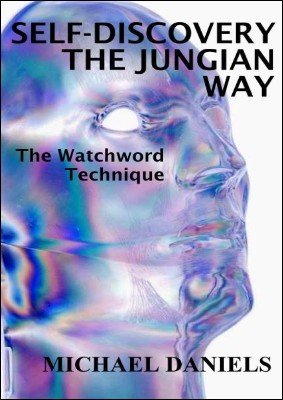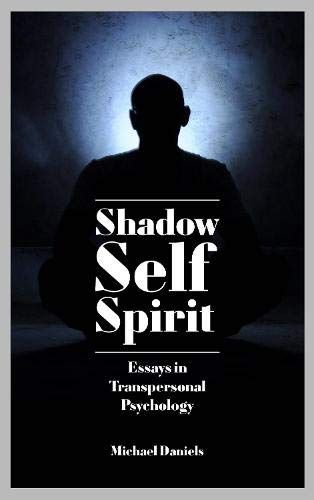Transpersonal anthropology is a subdiscipline of cultural anthropology and transpersonal studies. It studies the relationship between altered states of consciousness and culture.
Definition and context[edit]
According to Walsh and Vaughan,[1] who proposed several definitions of the transpersonal field in the early 1990s, Transpersonal anthropology is the cross-cultural study of transpersonal phenomena and the relationship between consciousness and culture. Charles Laughlin,[2] a founder of the field of Transpersonal anthropology, has defined the discipline as the cross-cultural study of transpersonal experiences, including the sociocultural evocation, interpretation, and utility of transpersonal experiences, and their involvement in defining social roles.
As with transpersonal psychology, the field is much concerned with altered states of consciousness (ASC) and transpersonal experience.[3] However, the field differs from mainstream transpersonal psychology in taking more cognizance of cross-cultural issues—for instance, the roles of myth, ritual, diet, and texts in evoking and interpreting extraordinary experiences.[4][5]
History[edit]
Commentators[6][7] locate the start of Transpersonal anthropology to the US in the 1970s. The first collective effort within the field was a tentative organization called the Phoenix Associates, and its supporting journal; Phoenix: New Directions in the Study of Man.[6] Among the contributors to the early work within the field was Philip S. Staniford, Ronald L. Campbell, Joseph K. Long and Shirley Lee.[6]
In 1978 Geri-Ann Galanti launched The Newsletter for the Anthropological Study of Paranormal and Anomalistic Phenomena (NASPAP), independently of the Phoenix-collaboration.[6] However, in 1980 these two groups came together to form the Association for Transpersonal Anthropology.[6] The official journal of the new organization was called Phoenix: The Journal of Transpersonal Anthropology.[6][8]
By the mid-eighties the discipline was described as a «young and growing field» by commentators.[8] However, in this period there was a schism within the organization related to future goals and orientations. One group wanted a humanistic direction, while another group wanted a more scientific orientation. In 1984 the latter group split from the organization and became the Association for the Anthropological Study of Consciousness (AASC).[6] This unit later went on to become the Society for the Anthropology of Consciousness.[6] According to Hunter,[9] the parallel field of Anthropology of Consciousness grew out of the transpersonal perspective, including Transpersonal anthropology. However, soon after these events the Association for Transpersonal Anthropology winded down, and The Phoenix journal ceased publication in 1985.[6]
Central to the development of the field has been the work of anthropologist Charles D. Laughlin, who is considered to be one of the primary founders of the discipline.[10] Shepard[7] also notes the contributions of Ihsan Al-Issa,[11] and Edith Turner,[12] wife of the anthropologist Victor Turner.
Contributions to academic theory[edit]
One of the contributions of Laughlin to anthropological theory is a differentiation between so-called monophasic and polyphasic cultures. According to this theory polyphasic cultures are open to altered states of consciousness, and tries to integrate these experiences into their worldview, while monophasic cultures, typical of technocratical societies, are largely closed to these alternative states of mind.[2][10] Laughlin has published extensively on the topic of Transpersonal anthropology, and has addresses several issues within the field, including methodology.[13][14][15][16][17]
The work of Al-Issa[11] has dealt with the topic of hallucinations, and the cultural aspects of them. Here, Al-Issa notes how not all cultures have negative views on hallucinations. Cross-cultural differences are noted by Al-Issa in sensory modalities most commonly encountered in hallucinations.
The field also includes the theories of anthropologist Dennis Gaffin whose contribution is a re-conceptualization of fairyology and the fairy-faith within the context of anthropology.[18][19]
Sheppard[7] explains how Edith Turner's interpretations of her husband's field studies among the Ndembu in Zambia also can be interpreted as belonging to transpersonal anthropology, insofar as her interpretations of their healing rituals were transpersonal.
Criticism[edit]
Sheppard[20] has published an article criticising transpersonal anthropology, at least as it has typically been practiced in contemporary scholarship. Her criticisms include its lack of a systematic conceptual base; its over-emphasis on shamanism; the difficulty in studying non-Western cultures that have been truly immune to Western influences and the question of the extent to which transpersonal anthropology has really addressed altered states of consciousness.
See also[edit]
References and sources[edit]
- ^ Walsh, R. and F. Vaughan. On transpersonal definitions. Journal of Transpersonal Psvchology, 25:199-207, 1993
- ^ Jump up to:a b Laughlin, C. D. (2013). The ethno-epistemology of transpersonal experience: The view from transpersonal anthropology. International Journal of Transpersonal Studies, 32(1), 43–50.
- ^ Cardeña, E., & Winkelman, M. (2011). Altering Consciousness: Multidisciplinary Perspectives: History, Culture, and the Humanities. Biological and psychological perspectives (Vol. 1). Greenwood Publishing.
- ^ Winkelman, M. (2010). Shamanism: A biopsychosocial paradigm of consciousness and healing. Oxford: Praeger Publishing.
- ^ Young, David E. and J.-G. Goulet (1994) Being Changed by Cross-cultural Encounters: The Anthropology of Extraordinary Experiences. Peterborough: Broadview Press.
- ^ Jump up to:a b c d e f g h i Laughlin, Charles D. (1994) "Transpersonal Anthropology, Then and Now." Transpersonal Review 1(1): 7-10.
- ^ Jump up to:a b c Sheppard, E. (2006) "Our worlds beyond." Transpersonal Psychology Review 10 (1):63-70.
- ^ Jump up to:a b Valle, Ronald S. & Harari, Carmi. Current developments in...Transpersonal Psychology. The Humanistic Psychologist 11, Vol. 13, NO. 1, Winter 1985
- ^ Hunter, Jack. "Between Realness and Unrealness": Anthropology, Parapsychology and the Ontology of Non-Ordinary Realities. DISKUS 17.2 (2015), 4-20 (The Journal of the British Association for the Study of Religions)
- ^ Jump up to:a b Hartelius, Glenn. The Imperative for Diversity in a Transpersonal Psychology of the Whole Person. International Journal of Transpersonal Studies, 33(2), 2014, pp. iii-iv
- ^ Jump up to:a b Al-Issa, Ihsan . (1995). "The Illusion of Reality and Reality of Illusion." British Journal of Psychiatry 166 (3)368-373.
- ^ Turner, Edith (1996) The Hands Feel It: Healing and Spirit Presence Among a Northern Alaskan People. DeKalb, IL: Northern Illinois University Press.
- ^ Laughlin, Charles D., McManus, John and Shearer, Jon (1983) "Dreams, Trance and Visions: What a Transpersonal Anthropology Might Look Like". Phoenix: Journal of Transpersonal Anthropology 7 (1/2):141-159.
- ^ Laughlin, Charles D. (1988) "Transpersonal Anthropology: Some Methodological Issues." Western Canadian Anthropology 5:29-60.
- ^ Laughlin, Charles D. (1994) "Psychic Energy and Transpersonal Experience: A Biogenetic Structural Account of the Tibetan Dumo Practice," in Being Changed by Cross-cultural Encounters: The Anthropology of Extraordinary Experiences (ed. by D.E. Young and J.-G. Goulet). Peterborough: Broadview Press, pp. 99–134.
- ^ Laughlin, Charles D. (1994) "Transpersonal Anthropology, Then and Now." Transpersonal Review 1(1): 7-10.
- ^ Laughlin, Charles D. (1994) "Apodicticity: The Problem of Absolute Certainty in Transpersonal Anthropology." Anthropology & Humanism 19(2): 1-15.
- ^ Leykam, A. E. Book Review: Running with the fairies: towards a transpersonal anthropology of religion. Choice; Middletown Vol. 50, Iss. 6, (Feb 2013): 1099.
- ^ Butler, Jenny. Book Review: Gaffin, Dennis. 2013. Running with the Fairies: Towards a Transpersonal Anthropology of Religion. Fieldwork in Religion, 10.2 (2015), 252–254
- ^ Sheppard, E. (2007). Anthropology and the development of the transpersonal movement: Finding the transpersonal in transpersonal anthropology. Transpersonal Psychology Review 11(1) 59-69 ISSN 1366-6991.
Further reading[edit]
- Campbell, R.L. and P.S. Staniford (1978) "Transpersonal Anthropology." Phoenix: The Journal of Transpersonal Anthropology 2(1):28-40.
- Laughlin, Charles D. and C. Jason Throop (2003) "Experience, Culture, and Reality: The Significance of Fisher Information for Understanding the Relationship Between Alternative States of Consciousness and the Structures of Reality." International Journal of Transpersonal Studies 22:7-26.
- Laughlin, Charles D., John McManus and Mark Webber (1985) "Neurognosis, Individuation and Tibetan Arising Yoga Practice." Phoenix: The Journal of Transpersonal Anthropology 8 (1/2): 91-106.
- MacDonald, J.L. (1981) "Theoretical Continuities in Transpersonal Anthropology." Phoenix: The Journal of Transpersonal Anthropology 5(1):31-47.
External links[edit]



